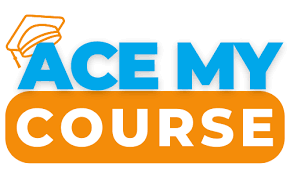Web development is a dynamic field that constantly evolves with new technologies and methodologies. One of the significant advancements in recent years is the introduction of CSS preprocessors. These powerful tools have revolutionized the way developers write and manage CSS, providing numerous benefits that enhance the overall development process. Whether you are a beginner or an experienced developer, understanding CSS preprocessors can significantly improve your workflow and the quality of your projects. In this blog post, we will explore the benefits of CSS preprocessors, especially in the context of a web development course, and why they are essential for modern web development practices.
What is a CSS Preprocessor?
A CSS preprocessor is a scripting language that extends the default capabilities of CSS, enabling developers to use variables, nested rules, mixins, functions, and other advanced features. The most popular CSS preprocessors include Sass (Syntactically Awesome Stylesheets), Less, and Stylus. These tools allow developers to write code in a more structured and efficient manner, which is then compiled into standard CSS that browsers can interpret.
Benefits of Using CSS Preprocessors
1. Improved Code Organization and Maintainability
One of the primary advantages of using CSS preprocessors is the ability to organize code more effectively. By using nested rules, developers can structure their CSS in a way that mirrors the HTML hierarchy. This not only makes the code more readable but also easier to maintain. For instance, in a web development course, students can learn how to structure their CSS to reflect the nested structure of their HTML, making it simpler to manage complex projects.
scss
Copy code
.navbar {
background-color: #333;
ul {
list-style-type: none;
li {
display: inline-block;
a {
color: white;
text-decoration: none;
}
}
2. Reusability with Mixins and Functions
CSS preprocessors enable the use of mixins and functions, which promote code reusability. Mixins allow developers to define styles that can be reused throughout the stylesheet, reducing redundancy and making updates easier. Functions can perform calculations and manipulate values, providing dynamic styling capabilities. For example, in a web development course in Pakistan, students can learn to create mixins for common styles like button designs, which they can reuse across multiple projects.
scss
Copy code
@mixin button($color) {
background-color: $color;
border: none;
padding: 10px 20px;
color: white;
cursor: pointer;
}
.btn-primary {
@include button(blue);
}
.btn-secondary {
@include button(grey);
}
3. Use of Variables
Variables in CSS preprocessors allow developers to store values like colors, fonts, and sizes, which can be reused throughout the stylesheet. This feature simplifies the management of design systems and ensures consistency. For instance, if a brand color changes, updating the variable will automatically update all instances where the variable is used. In a web development course, students can learn to create and use variables to maintain consistent theming across their websites.
scss
Copy code
$primary-color: #3498db;
$secondary-color: #2ecc71;
body {
color: $primary-color;
}
a {
color: $secondary-color;
}
4. Enhanced Features and Tools
CSS preprocessors offer a range of advanced features that are not available in standard CSS. These include mathematical operations, loops, and conditionals, which enable developers to write more dynamic and flexible stylesheets. For example, in a web development course in Pakistan, students can learn how to use loops to generate multiple classes dynamically, reducing the amount of manual coding required.
scss
Copy code
@for $i from 1 through 3 {
.col-#{$i} {
width: 100% / 3 * $i;
}
}
Why Learn CSS Preprocessors in a Web Development Course?
1. Enhanced Learning Experience
Incorporating CSS preprocessors into a web development course provides students with a more comprehensive learning experience. They gain practical knowledge of advanced CSS techniques and best practices, which are crucial for modern web development. By learning preprocessors, students can tackle more complex projects and build robust, scalable websites.
2. Industry Relevance
CSS preprocessors are widely used in the industry, making them an essential skill for aspiring web developers. By mastering these tools in a web development course in Pakistan, students can enhance their employability and stand out in the competitive job market. Many companies look for developers who are proficient in preprocessors like Sass and Less, as they contribute to more efficient and maintainable codebases.
3. Efficient Workflow
Learning CSS preprocessors can significantly improve a developer’s workflow. Features like variables, mixins, and functions reduce repetitive tasks and streamline the styling process. For instance, in a web development course, students can learn to create a library of reusable components, which can speed up development time and ensure consistency across projects in web development course in Pakistan.
Conclusion
CSS preprocessors are invaluable tools that offer numerous benefits for web developers. They enhance code organization, reusability, and efficiency, making them essential for modern web development practices. By incorporating preprocessors into a web development course, students can gain practical skills that are highly relevant in the industry. Whether you are taking a web development course or self-learning, mastering CSS preprocessors like Sass and Less will undoubtedly elevate your web development capabilities. For those in Pakistan, a web development course that includes CSS preprocessors can provide a competitive edge in the local and global job markets, preparing you for a successful career in web development.
In summary, CSS preprocessors streamline the styling process, promote best practices, and equip developers with the tools needed to create high-quality, maintainable websites. Embracing these technologies through a web development course can open up new possibilities and enhance your overall development experience.





